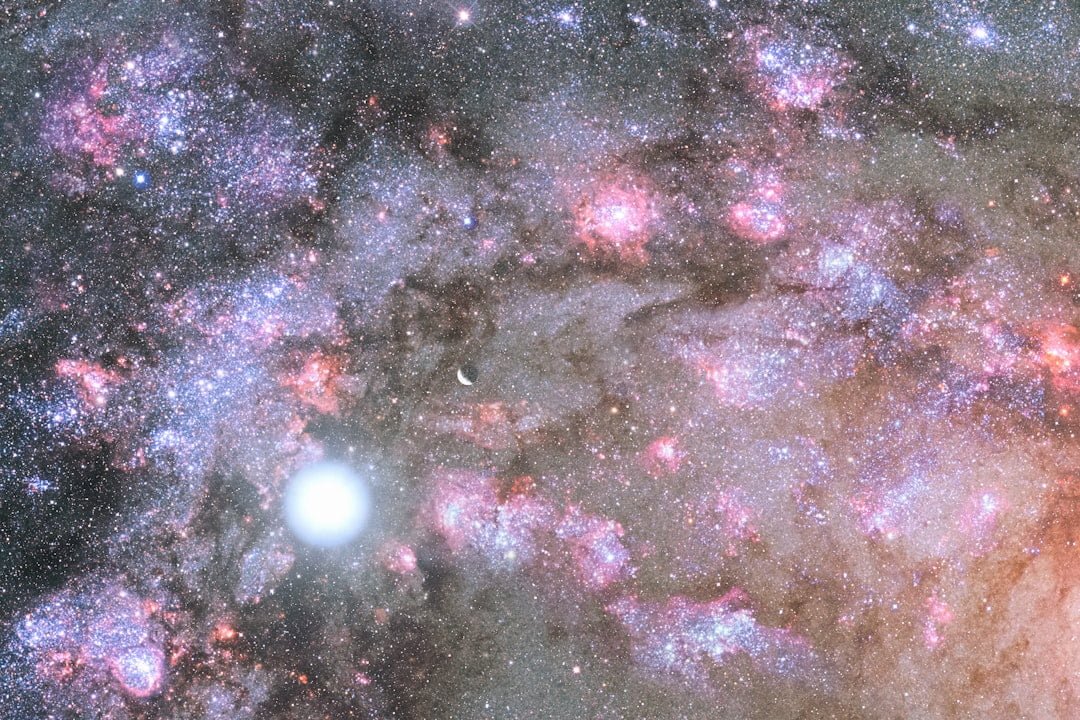Black holes are one of the most fascinating and mysterious objects in the universe. They are regions in space where gravity is so strong that nothing, not even light, can escape from them. The concept of black holes was first proposed by physicist John Michell in 1783, but it wasn’t until the early 20th century that Albert Einstein’s theory of general relativity provided a mathematical framework for understanding them.
At the heart of a black hole lies a singularity, a point of infinite density and zero volume. This singularity is surrounded by an event horizon, which is the boundary beyond which nothing can escape the gravitational pull of the black hole. The absence of light and information beyond the event horizon makes black holes appear black and gives them their name.
Key Takeaways
- Black holes are mysterious objects in space that have fascinated scientists and the public for decades.
- The event horizon is the point of no return around a black hole, beyond which nothing can escape its gravitational pull.
- Black holes form from the collapse of massive stars and can continue to grow by consuming surrounding matter.
- There are three types of black holes: stellar, intermediate, and supermassive, each with unique characteristics.
- The gravitational pull of black holes can distort and even destroy nearby objects, including stars and planets.
The concept of event horizon and its significance
The event horizon is a defining feature of black holes. It is the point of no return, beyond which anything that enters will be trapped forever. The size of the event horizon depends on the mass of the black hole. For a stellar black hole, which forms from the collapse of a massive star, the event horizon is relatively small, with a radius of only a few kilometers. In contrast, supermassive black holes, which are found at the centers of galaxies, have event horizons that can extend for millions or even billions of kilometers.
The presence of an event horizon has profound implications for surrounding objects. Anything that gets too close to a black hole will be pulled in by its gravity and eventually cross the event horizon. This includes not only matter but also light itself. As light approaches the event horizon, it becomes increasingly redshifted and eventually disappears from view. This phenomenon is known as gravitational redshift.
How black holes form and evolve
Black holes form through the collapse of massive stars. When a star runs out of fuel, it can no longer sustain the nuclear reactions that keep it stable. Without this outward pressure, gravity causes the star to collapse in on itself. If the mass of the collapsing star is above a certain threshold, known as the Tolman-Oppenheimer-Volkoff limit, it will continue to collapse until it forms a black hole.
Gravity plays a crucial role in the formation of black holes. As matter collapses under its own gravity, it becomes denser and denser until it reaches the point of singularity. At this point, the density becomes infinite and the laws of physics as we know them break down. This is why black holes are often described as “singularities” – they represent a breakdown in our understanding of the universe.
During the collapse of a massive star, a disk of material known as an accretion disk forms around the black hole. This disk is made up of gas and dust that is pulled in by the black hole’s gravity. As the material in the accretion disk spirals towards the black hole, it heats up and emits large amounts of radiation, including X-rays and gamma rays. This radiation can be detected by telescopes and is one of the ways that astronomers can identify the presence of a black hole.
The different types of black holes and their characteristics
There are three main types of black holes: stellar black holes, intermediate black holes, and supermassive black holes.
Stellar black holes are formed from the collapse of massive stars. They have masses ranging from a few times that of our Sun to several tens of times that of our Sun. Stellar black holes are relatively common in our galaxy, with estimates suggesting that there may be millions or even billions of them.
Intermediate black holes have masses between 100 and 100,000 times that of our Sun. They are thought to form through the merger of smaller black holes or through the collapse of massive gas clouds. Intermediate black holes are less common than stellar black holes but have been observed in some galaxies.
Supermassive black holes are the largest type of black hole, with masses ranging from hundreds of thousands to billions of times that of our Sun. They are found at the centers of galaxies, including our own Milky Way. The origin of supermassive black holes is still not well understood, but they are thought to form through the accretion of large amounts of matter or through the merger of smaller black holes.
Each type of black hole has its own unique characteristics. Stellar black holes are relatively small and have a strong gravitational pull. Intermediate black holes are larger and have a weaker gravitational pull. Supermassive black holes are the largest and most massive, with a gravitational pull that can affect the motion of stars and even entire galaxies.
The gravitational pull of black holes and its impact on surrounding objects
The gravitational pull of a black hole is so strong that it distorts space-time around it. This distortion causes nearby objects to be pulled towards the black hole, much like a ball rolling down a hill. As objects get closer to the black hole, they experience a stronger gravitational force and are pulled in faster.
The impact of a black hole’s gravity on surrounding objects can be dramatic. For example, if a star gets too close to a black hole, it can be torn apart by tidal forces. These forces arise from the difference in gravitational pull between the side of the star facing the black hole and the side facing away from it. The result is a process known as “spaghettification,” where the star is stretched into long, thin strands.
In addition to spaghettification, the gravitational pull of a black hole can also cause the formation of jets and radiation. Jets are narrow streams of high-energy particles that are ejected from the vicinity of a black hole at nearly the speed of light. These jets can extend for thousands of light-years and are thought to be powered by the black hole’s accretion disk. The radiation emitted by black holes can be detected across the electromagnetic spectrum, from radio waves to X-rays and gamma rays.
Theories on what happens inside a black hole

The nature of what happens inside a black hole is still a subject of intense debate among scientists and physicists. One theory is that as matter falls into a black hole, it is compressed to infinite density at the singularity. This compression leads to a breakdown of our current understanding of physics, as the laws of quantum mechanics and general relativity become incompatible.
Another theory is that inside a black hole, there may be a parallel universe or another region of space-time. This idea is based on the concept of wormholes, which are hypothetical tunnels that connect different parts of the universe. If wormholes exist, they could provide a connection between our universe and another one inside the black hole.
Quantum mechanics also plays a role in our understanding of black holes. According to quantum mechanics, particles can spontaneously appear and disappear in empty space due to fluctuations in energy. These particles are known as virtual particles. Near the event horizon of a black hole, it is thought that virtual particles can become real particles if one falls into the black hole while the other escapes. This process is known as Hawking radiation, named after physicist Stephen Hawking who first proposed its existence.
The possibility of time travel through black holes
One of the most intriguing possibilities associated with black holes is the potential for time travel. According to Einstein’s theory of general relativity, gravity can cause time to slow down or speed up depending on its strength. This phenomenon, known as time dilation, has been observed in experiments involving high-speed travel and strong gravitational fields.
Theoretically, if an object were to enter a black hole and survive the extreme conditions near the singularity, it could potentially emerge in a different time or even a different universe. This idea has captured the imagination of science fiction writers and has been the subject of much speculation and debate among physicists.
Several theoretical models have been proposed to explain how time travel through black holes could be possible. One idea is that black holes could act as portals or gateways to other parts of the universe or even other universes. Another idea is that black holes could create “wormholes” in space-time, which would allow for shortcuts between distant points in the universe.
However, there are significant challenges and limitations to the possibility of time travel through black holes. For one, the extreme conditions near the singularity of a black hole would likely destroy any object that enters it. Additionally, the laws of physics as we currently understand them break down at the singularity, making it difficult to predict what would happen to an object that enters a black hole.
The potential dangers and risks associated with black holes
While black holes may be fascinating objects, they also pose potential dangers and risks. For example, the extreme gravitational pull of a black hole can have a significant impact on space exploration. If a spacecraft were to venture too close to a black hole, it could be pulled in by its gravity and destroyed. This makes it essential for scientists and engineers to carefully plan missions to avoid getting too close to these cosmic behemoths.
There is also a potential threat to Earth from black holes. While the chances of a black hole coming close enough to our planet to cause any harm are extremely low, it is not entirely impossible. If a black hole were to pass through our solar system, its gravitational pull could disrupt the orbits of planets and other celestial bodies, leading to catastrophic consequences.
Given these potential dangers, it is crucial for scientists and astronomers to exercise caution and take safety measures when studying black holes. This includes using telescopes and other instruments to observe black holes from a safe distance and analyzing data to understand their behavior and properties.
The role of black holes in the formation and growth of galaxies
Black holes play a crucial role in the formation and growth of galaxies. Supermassive black holes, in particular, are thought to be intimately connected to the evolution of galaxies. It is believed that as galaxies form, gas and dust accumulate at their centers, eventually leading to the formation of a supermassive black hole.
The presence of a supermassive black hole can have a profound impact on the surrounding galaxy. As matter falls into the black hole’s accretion disk, it releases large amounts of energy in the form of radiation and jets. This energy can heat up the surrounding gas and dust, preventing it from collapsing and forming new stars. As a result, galaxies with active supermassive black holes tend to have fewer young stars and less star formation activity.
Supermassive black holes also have the potential to influence the motion of stars and gas within a galaxy. Their gravitational pull can cause stars to move faster or slower depending on their distance from the black hole. This effect, known as gravitational dynamics, can lead to the formation of structures such as spiral arms and bars in galaxies.
The connection between black holes and dark matter is another area of active research. Dark matter is a mysterious substance that makes up about 27% of the universe but does not interact with light or other forms of electromagnetic radiation. It is thought that dark matter plays a crucial role in the formation and evolution of galaxies, and black holes may be intimately connected to this process.
The ongoing research and exploration of black holes by scientists and astronomers
Despite their mysterious nature, scientists and astronomers have made significant progress in understanding black holes in recent decades. Advances in technology, such as powerful telescopes and computer simulations, have allowed researchers to study these enigmatic objects in more detail than ever before.
Telescopes, both on the ground and in space, have been used to observe black holes across the electromagnetic spectrum. By analyzing the radiation emitted by black holes, scientists can learn about their properties, such as their mass, spin, and accretion rate. Telescopes can also detect the effects of a black hole’s gravity on surrounding objects, such as the motion of stars and gas.
In addition to observational studies, scientists also use computer simulations to model the behavior of black holes. These simulations allow researchers to test different theories and make predictions about what might happen inside a black hole or during a black hole merger. By comparing the results of simulations with observations, scientists can refine their understanding of black holes and make new discoveries.
The ongoing research and exploration of black holes hold the potential for new insights and discoveries. For example, the recent detection of gravitational waves by the Laser Interferometer Gravitational-Wave Observatory (LIGO) has opened up a new window into the study of black holes. Gravitational waves are ripples in space-time caused by the acceleration of massive objects, such as black holes. By detecting these waves, scientists can learn more about the properties and behavior of black holes.
In conclusion, black holes are some of the most fascinating and mysterious objects in the universe. They are regions in space where gravity is so strong that nothing can escape from them, not even light. The concept of event horizon, singularity, and their impact on surrounding objects make them even more intriguing. Black holes form through the collapse of massive stars and play a crucial role in the formation and growth of galaxies. While there are still many unanswered questions about black holes, ongoing research and exploration by scientists and astronomers hold the potential for new insights and discoveries.
If you’re fascinated by the mysteries of the universe, you won’t want to miss this captivating article on “What is the fate of the universe? Will it end in a Big Freeze, Big Rip, or Big Crunch?” It delves into the mind-boggling possibilities of how our vast cosmos might meet its ultimate destiny. From exploring the concept of a Big Freeze where everything freezes into darkness, to contemplating a Big Rip where galaxies are torn apart, and even considering a Big Crunch where the universe collapses in on itself, this article will leave you pondering the fate of our existence. Check it out here and prepare to have your mind blown.
























